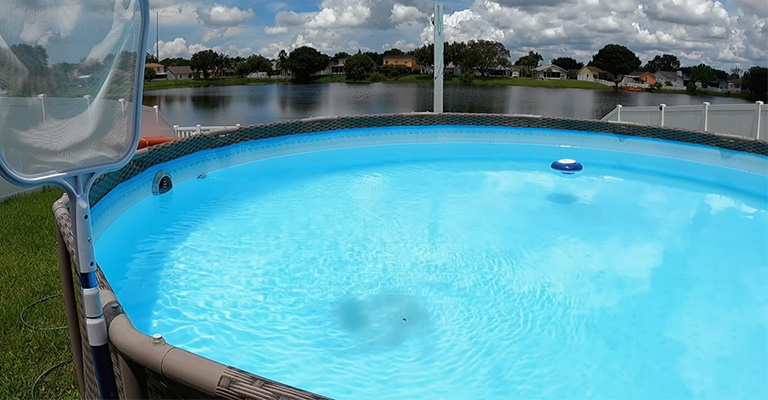With the arrival of spring, nature bursts into life, bringing vibrant colors and a buzz of activity. But amidst this seasonal transformation, there’s one familiar problem that puzzles homeowners and pool owners alike: pollen.
Like tiny specks of dust, pollen particles seem to find their way into every crevice, including swimming pools.
But what happens to these minuscule grains when they encounter the water? Do they sink to the bottom, or do they stay on the surface?
Pollen can sink to the bottom of a pool under certain conditions. Pollen is relatively light and can be carried by wind or water onto the surface of a pool.
When pollen lands on the water, it may initially float on the surface due to its lightweight. However, over time, pollen can become saturated with water and lose buoyancy, causing it to sink to the bottom of the pool.
Additionally, other factors such as the pool’s circulation system, wind patterns, and the presence of debris or other particles in the water can affect whether pollen sinks or remains suspended in the pool.
A well-maintained pool with an efficient filtration system is more likely to remove pollen from the water and prevent it from sinking to the bottom.
Why Is There Pollen in My Pool?
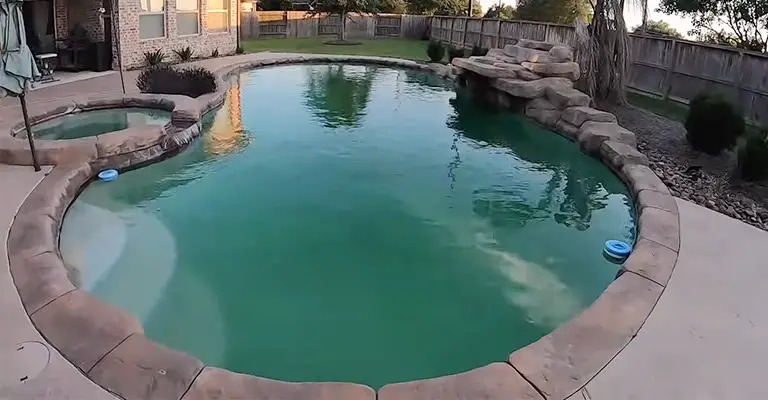
Are there plants in your backyard? How about flowers? Are there trees? In that case, pollen will inevitably get into your pool.
You can still get it blown in from your neighbors’ yards, and if the wind is strong, even from farther away.
You can’t avoid it, that’s the point. It’s just a matter of being prepared when it happens. It will happen eventually.
Pollen Or Yellow Algae?
If you have yellow algae or pollen, you should first determine if you have a pollen problem. The wind can blow pollen on top of the water. Pollen eventually sinks to the bottom and must be vacuumed.
When agitated by the vacuum, pollen in the pool puffs up. A backyard pool will accumulate algae on its sides and bottom, and it will need to be scrubbed to remove it.
There are several ways to identify pollen:
- The waterline of the pool tile tends to collect pollen.
- Your skimmer’s inside will also be coated with pollen.
- Surface pollen is easily blown into corners by the wind.
Eventually, pollen dissolves and sinks to the pool floor, or discolors the pool water, making it appear yellow.
(Usually) algae will not stick to tile or float on the surface, but will stick to underwater surfaces, especially on the shady sides.
When hit with a brush on the floor, algae will not ‘dust-up’ like pollen but will need firm brushing to remove.
What’s Wrong With Pollen?
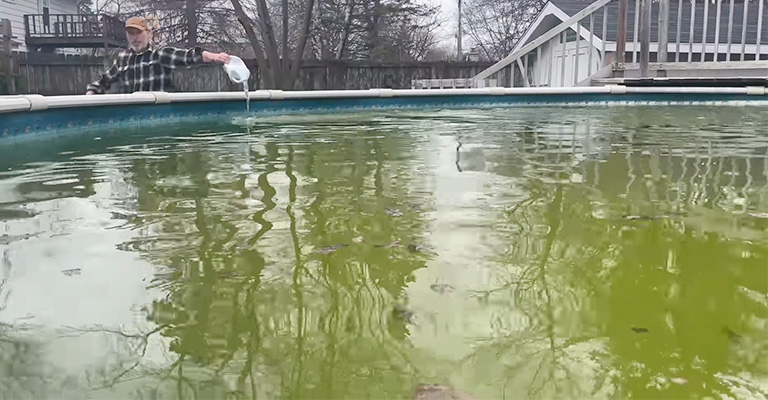
As well as causing allergy issues, pollen in the pool can upset your pool’s water chemistry and cause clogs in the filtration system.
- Buildup along tile lines and inside skimmer walls
- Micropores in pool filter media are clogged by oily pollen particles
- Stains and scum can form on water lines when mixed with dirt
- Organic compounds such as phosphates and bacteria are contained in pollen
How can you deal with pollen in your pool once you’ve determined that it is pollen? It should eventually filter out on its own, but you can speed up the process by removing pollen very quickly from a pool.
How To Get Rid Of Pollen In Your Pool?
Our backyards and pool areas are blooming with flowers now that spring has officially arrived.
As the weather warms, the dreaded yellow stuff in the air that many people are allergic to is released: pollen.
Additionally, pollen causes seasonal allergies and sinks to the bottom of your pool water, requiring pool maintenance. You can prevent and remove pollen buildup in your pool with these easy steps.
1. A Fine-Mesh Skimmer Is Worth The Investment
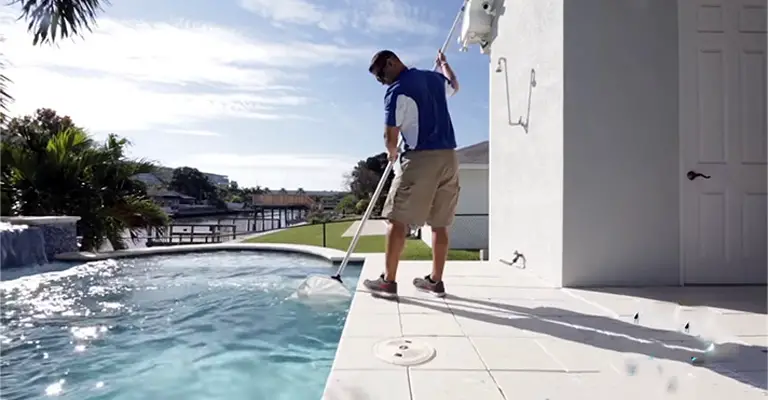
The surface of your pool needs to be skimmed frequently with a skimmer. If the pollen is heavy, you should skim your pool twice a day.
Due to the small size of the pollen, your regular skimmer will not be able to pick it up, so replace it with a fine-mesh skimmer.
If pollen is not removed from the water line, it can mix with bacteria and cause staining.
2. You Should Run Your Pool Filter More Than Usual
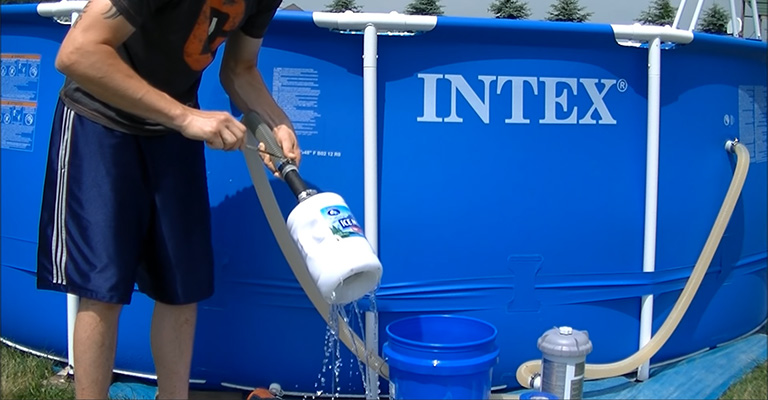
The next step is to run your pool filter a lot more often than you usually would. You might even consider running it 24 hours a day. In most cases, your filter will be able to remove most pollen depending on its size and type.
In some cases, however, pollen is too small to go through the filter, so it will end up in the pool again, requiring further pool maintenance.
3. When Not In Use, Cover The Pool
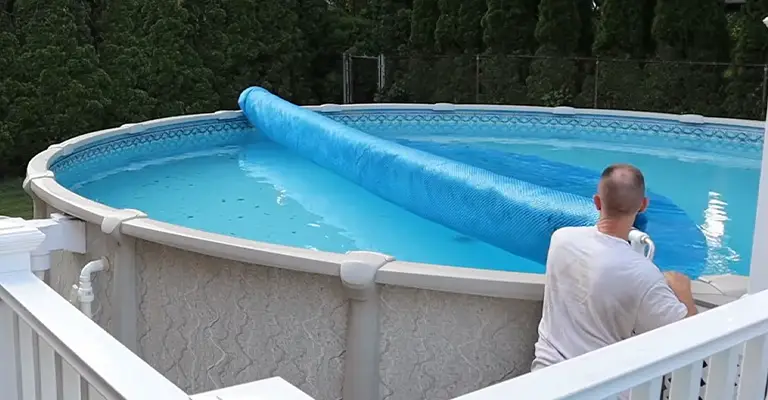
If you are not using your pool, be sure to cover it. Against pollen, a pool’s cover plays a vital role.
The physical barrier will prevent the majority of pollen from getting into your pool water in the first place, eliminating the need for further pool maintenance.
4. Chemicals Can Help
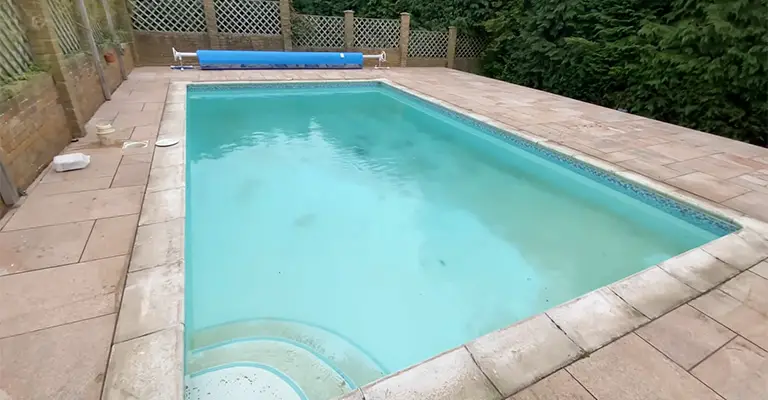
Adding aluminum sulfate can help catch pollen that is too small for the filter. You can easily skim off the pollen by clumping together the aluminate sulfate with the pollen.
The fine-mesh skimmer should remove most of the pollen so it doesn’t reach the pool filter. In addition, the aluminum sulfate will also assist your filter in catching pollen that does make its way to the filter.
5. Shock It When All Else Fails
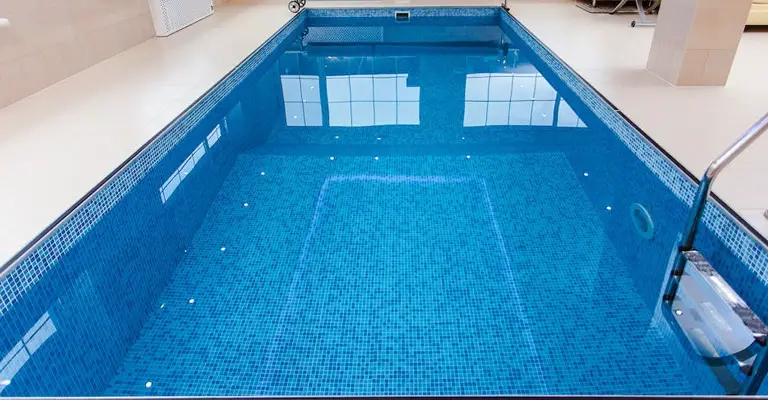
The pollen season will make your pool more attractive to bacteria and other debris, so you will want to shock it at some point during the season.
In order to prevent further pool maintenance, shock the pool and follow up with a good manual vacuuming.
How Can I Prevent Pollen From Getting In My Pool?
During the Springtime, putting a pool cover over your pool will be the most effective tactic. Pollen will not be able to enter your pool because this will cover the entire surface. You will also be able to keep your pool warm as a result.
It may also be helpful to use a screen. Even though pollen can’t be stopped from forming, it can be prevented from becoming a problem for your pool.
Summary
In summary, take care to regularly remove pollen with a fine mesh net or skimmer sock, and keep your tiles and skimmer clean inside walls, while running the filter from time to time.
A Clarifier, Enzyme, or Filter Aid can assist in cleaning the water faster if you need or want more rapid pollen removal.
In some cases, shocking the pool can result in cloudy water, although it can also remove large amounts of pollen.
Final Words
In the pollen season, pool maintenance will be extra, but, luckily, the problem usually passes in a few weeks. With these techniques, you can minimize the manual labor involved in controlling the pollen problem in your pool.
Prepare ahead of time to fight pollen by watching the pollen counts. You and your family and friends will enjoy pristine water throughout the season as a result of the extra effort.

